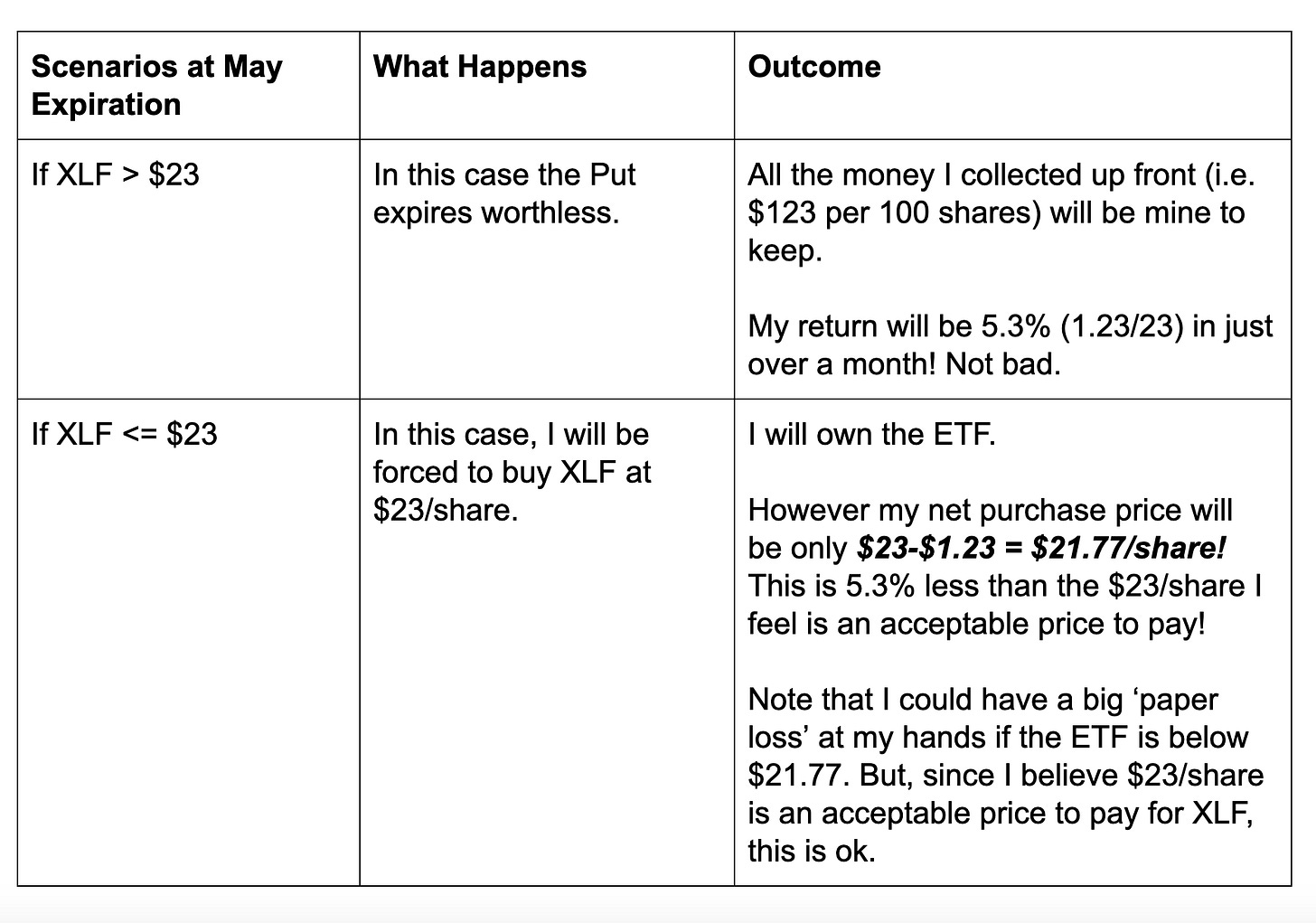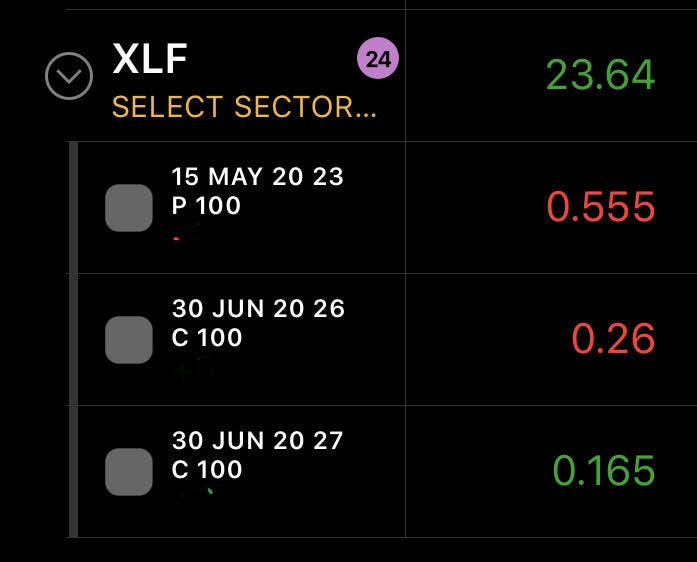Fun With Options: Have Your Cake And Eat It Too!
Announcement: If you haven’t signed up for the Stock Picking Contest, you only have until the end of the week! It will be Epic! We have over 110 participants now. Sign up here: https://forms.gle/eGrXkGUtmTjWTYJL7
This is the sixth article in my Fun with Options Series:
Today I’ll discuss two ways in which you can use options to “have your cake and eat it too!”
By Selling Puts To Reduce Your Stock Purchase Price
By Selling Puts To Finance Your Amplification Strategy

Selling Puts To Reduce Your Stock Purchase Price
Recall that a put option (aka a Put) gives the buyer the right but not the obligation to sell a specific stock at a specific price (the strike price) by a specific date (the expiration date). By selling Puts, you’re on the other side of this trade. Meaning, if the buyer decides to “exercise” their right to sell the stock, you will be obligated to purchase 100 shares for every option you had sold. You are locked into this purchase price (i.e the strike price).
Why Would You Want to Do This?
Well, if you’re willing to buy the stock at a certain price (let’s say, at P or less), you can sell a Put with Strike P and lock-in that purchase price.
Outcome 1: Get Paid To Wait
If the stock doesn’t get down to P, then you would simply keep the premium collected upfront (i.e you got paid to wait for your purchase price).
Outcome 2: Reduce Your Cost Basis
If the price does go below P and the buyer exercises their right to sell you stock, then you are obligated to buy the stock at price P. Your net purchase price however will actually be lower than P! Remember, you got paid some money upfront. So you get the stock for cheaper than you were willing to pay for it!
Example To Illustrate:
I recently initiated this trade on the XLF ETF on April 9, 2020.
The XLF ETF has a collection of financial stocks like JP Morgan, Bank of America etc. I was willing to buy this ETF for $23/share. But instead of buying the shares outright, I decided to sell May 15 $23 Puts. As a result, I was able to collect ~$1.23 per contract or $123, by selling these Puts.
In a month or so, one of two things can happen:

Selling Puts To Finance Your Amplification Strategy
During my earlier article “Amplifying Returns by Buying Calls” I wrote that when we purchase a stock, we can amplify returns by buying Calls.
Recall however that Calls are depreciating assets - they lose value over time. This makes buying them risky. So, spending extra money to buy these calls is not ideal.
Can we avoid this? Yes! Yes we can!
If we sell Puts in the hopes that we will ultimately be forced to buy the stock, we can use the money we get upfront to buy our amplification Calls!
This way, we incur a zero dollar cost for the purchase of the calls to help amplify our returns. We incur no additional risk than if we had simply bought the stock or ETF outright.
The tradeoff however is that if the Put option you sold is never exercised, you may never end up owning the stock. As a result, you may miss out on gains if the stock does well.
Example To Illustrate:
In the example above, when I sold May 15, 2020 Puts on the XLF ETF on April 9, 2020, I also deployed our amplification strategy.
I had two approaches available to me:
I could have waited until expiration, and if the Puts I sold got assigned, I could then use the $123 (per Put) collected to buy my amplification Calls.
OR
I could buy the calls right away. This is what I did! The advantage of this approach is that if the stock goes up before the May Put expires, I can participate in the ETF’s potential upside even though I don’t yet own the ETF.
More specifically I did the following:
Sold the May 15 $23 XLF Puts for $1.23 per contract
For each Put sold, I bought one June 30 $26 Call for $0.72 AND one June 30 $27 Call for $0.40, thereby spending $112 of the $123 I collected, and gave myself ~80 days to benefit from any stock price appreciation in the near term.
Note that this is just one choice. You can play around with the dates and strike prices and choose Calls with different strikes and expiration dates. My goal in choosing the above calls was to (a) not spend more money than I had collected and (b) give myself ample time to take advantage of any ETF price appreciation.
This approach is advantageous because I get to participate in any XLF upside, but if that doesn’t happen, and if the price stays below $23, I still get to buy the ETF for $23, a price I am comfortable with.
As of today, Wednesday April 29, we have the following:
XLF is at $23.64/share (after hours)
The May 15 Put is worth $0.55, a gain of $68
The June 30 $26 Call is worth $0.26, a loss of $46
The June 30 $27 Call is worth $0.16, a loss of $24

Our net result so far is +$9 ($123 - $72 - $40 + $68 - $46 - $24) = +0.4% (per option contract)
So far amplification isn’t working, but we have until the end of June to see what happens. Let’s see how it goes.
As you can see, with both strategies above, you get to have your cake and eat it too!


